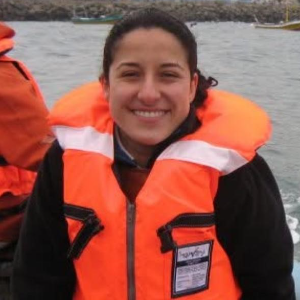Title : Causes of discard observed in the industrial purse seine fishery targeting anchovy (Engraulis ringens), between the Arica y Parinacota and Antofagasta Regions in the Northern Chile
Abstract:
The industrial purse seine fishery targeting anchovy (Engraulis ringens), is a complex socio-economic and ecological system, because it is a resource used to be reduced into fishmeal and fish oil for feeding other animals that are used for food production, and in smaller quantities, to direct human consumption. In Chile, the capture of this resource is generated in the Northern Zone, between the Arica y Parinacota and Antofagasta Regions (18° 23′S y 24°00′S). However, the capture of this specie has negative effects such as discarding, which consists of, the return of the catch to the sea of target specie, accompanying fauna and incidental catch (bycatch), enclosed in the purse seine net. At the 2017, starting the discard research plan began. According to data from the scientific observer on board, 452.3 tons (t) of discarding catches were produced in this period between 2017 and 2018, with the main causes of discarding being: “Poor quality criteria”, “Capture of specimens under commercial size” and “Exceed operating capacity or safety considerations (mechanical failure or risk to the crew)”. In 2019, the implementation of discard reduction plans for the anchovy fishery and its accompanying fauna was established, beginning the monitoring and compliance period of these plans. Between 2019 and 2023, a trend towards a decrease in the volume of discarded catch was observed (approximately 100 t), with the main causes of discarding in the monitoring period being: “Capture of specimens under commercial size”, “Exceeding operating capacity or safety considerations (mechanical failure or risk to the crew)” and “Exceeding the permitted limit of accompanying fauna”. In both research and discard reduction periods, it was observed that anchovy was the main resource that presented the highest percentage by weight of discarded catch.



